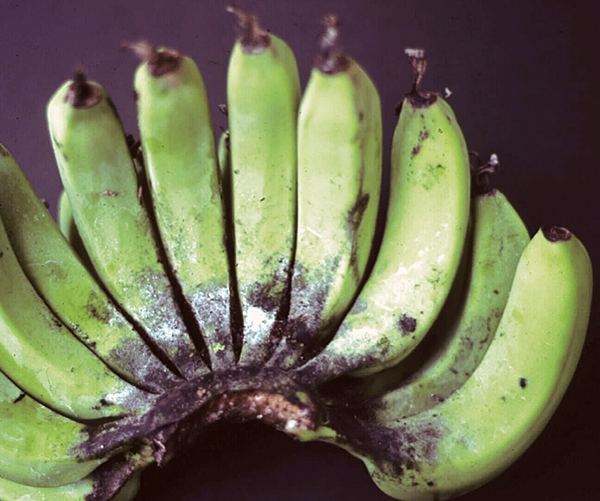Spots on fruit

Banana spotting bug
Cause: Feeding (sucking) by banana spotting bug, Amblypelta lutescens lutescens, usually on the exposed outer curve of the fingers.
Solution: Damage is more severe on blocks adjacent to rainforest. No specific treatments required. If more than 5% of bunches are affected, spot spray.
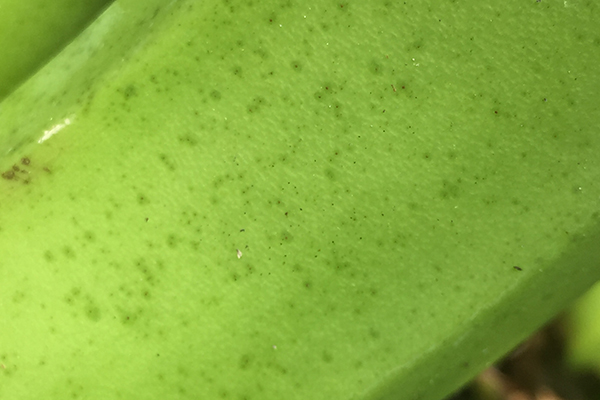
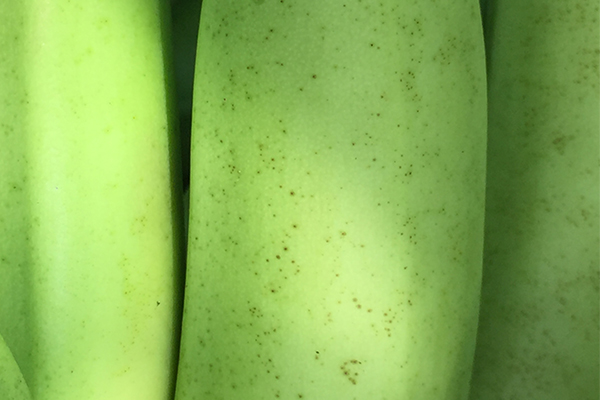
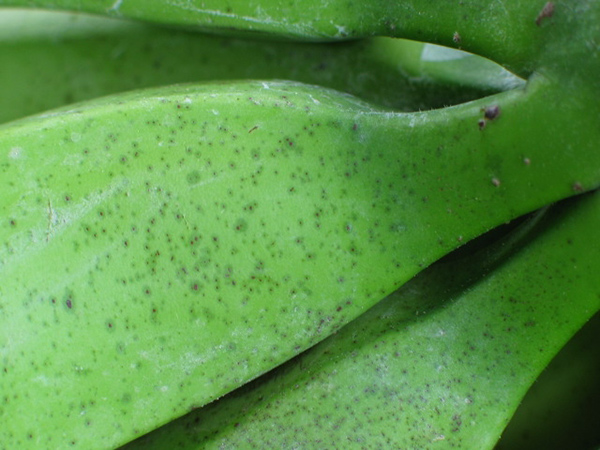
Fruit speckle
Cause: Caused by multiple species of fungi including Colletotrichum musae, Fusarium oxysporum and Fusarium semitectum. Spores are produced in large numbers on dead leaf material during wet conditions and are spread in air currents to the fruit.
Solution: Fruit speckle is generally a minor disease that can become problematic in seasonally unfavourable weather conditions. Under normal conditions, a fungicide leaf spot spray program should assist and keep levels low.

Fruit flies
Cause: Banana fruit fly, Bactrocera musae, and Queensland fruit fly, Bactrocera tryoni, laying eggs (stinging) in the pulp of banana just below the skin. The banana fruit fly can sting green fruit but the Queensland fruit fly only stings ripening or yellow fruit.
Solution: Chemical control should not be required since fruit is harvested at the hard green stage before either of the fruit flies can complete their life cycles. Do not leave over ripe fruit in the field. If mixed ripe fruit causes hot spots in the plantation, spot spray with an appropriate chemical.

Flower thrips
Cause: Scarring from egg-laying by flower thrips, Thrips hawaiiensis on young fruit when still covered by the bracts.
Solution: Insecticide injection at bell emergence for control of scab moth also controls flower thrips.
More info:
Banana flower thrips – general information
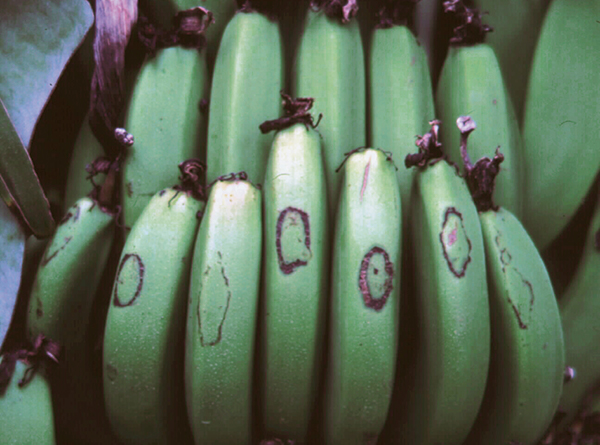
Spray burn
Cause: Spraying with excessive volumes of chemical or inappropriate chemical use.
Solution: Use only registered chemicals and apply according to the label directions.

Sooty blotch
Cause: Multiple fungal organisms are associated with the symptoms.
Solution: Lady Finger and Ducasse are more prone to sooty blotch than Cavendish-type bananas. A post-harvest dip of sodium hypochlorite at 100 ppm for 5 minutes followed by immediate rinsing, is highly effective in removing sooty blotch.
